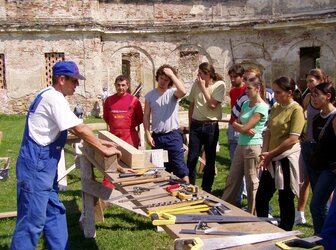The Ambulance for Monuments
The Ambulance for Monuments project was launched in 2016 to rescue hundreds of heritage-listed buildings in Romania through a large network of active heritage organisations. These emergency interventions are carried out by experts, students and trained craftsmen on a voluntary ...
Read more
Project details
Description:
The Ambulance for Monuments project was launched in 2016 to rescue hundreds of heritage-listed buildings in Romania through a large network of active heritage organisations. These emergency interventions are carried out by experts, students and trained craftsmen on a voluntary basis with the support of local communities and authorities. At the heart of the project in each region is an intervention kit and a lorry equipped with tools, construction equipment and materials. The conservation work is carried out by Asociația Monumentum (the owner and developer of the project), Asociația pentru Patrimoniu Activ-PACT, and Asociația Vernacular and Asociația Arhaic. The network is still growing, with a number of interventions planned for 2020 by four more organisations: Asociația Actum; Asociația Inima Olteniei; Asociația Atelierul de Patrimoniu; and Asociația Rost. The Ambulance for Monuments project won the Public Choice Award 2020. It received the largest number of votes, cast via an online poll with the participation of over 12,000 citizens from all over Europe. The President of Romania saluted the public that ranked The Ambulance for Monuments first in their choices. “I believe that many European citizens appreciated the Romanian project as a concrete expression of solidarity and an example for the appropriate use of the civic energies developed by culture and cultural heritage”, affirmed H.E. Klaus Werner Iohannis (read full message in English and Romanian). Most of the project’s activities are related to the replacement of damaged roofs, securing walls from collapse, implementing proper water drainage and stabilising wall paintings. Since 2016, many interventions on local, national and World Heritage sites – such as churches, mills, manor houses, train stations and ruins of historic fortifications – have been carried out.
Similar projects















